Buy Best Thermal Camera Drone: Top 10 IR Camera Drone for Thermal Imaging
Buy best thermal camera drone for search & rescue, firefighting, & inspections at XRTech Group. We offers the best thermal camera drone & thermal imaging drone with IR thermal imaging all around the world for various professional needs. We have drone 65 + Total Drone Box Deployments, 35,000 Hours of Flight (2024), 14,000 5G Based Deployments, 50 TB of Data Collected (2024), from industrial inspections to search-and-rescue missions. These Infrared camera drones with thermal cameras provide high-quality thermal imaging that detects heat signatures in various environments, ensuring accuracy and safety. Explore top thermal camera on drones from DJI and Autel, focusing on their features, cameras, and use cases to help you choose the right one.
Buy Top Thermal Camera Drone: Infrared Thermal Imaging Drone
When choosing the right infrared thermal imaging drone, it’s crucial to focus on the specific needs of your operation. High-quality thermal camera drones are not just about their camera resolution but also about other essential features like flight time, range, and software integration.
For instance, the DJI Matrice 30 Series (M30T Variant) stands out at the best thermal imaging drone with its 12 MP wide camera, a thermal camera boasting 640×512 resolution, and a 16x zoom. This drone is engineered for advanced applications, such as search-and-rescue missions or industrial inspections. With a 41-minute flight time and a transmission range of 15 km, it’s ideal for long-range, high-precision tasks. The M30T integrates multiple sensors, enabling it to perform in diverse environmental conditions, giving you detailed thermal data from the air.
Similarly, the DJI Matrice 350 RTK also a best thermal imaging drone, offers extended flight capabilities of up to 55 minutes and supports the Zenmuse H20T thermal camera, making it an excellent choice for high-precision thermal inspections and industrial applications. This drone can handle rough weather, ensuring smooth operation in challenging conditions, and its 640×512 thermal resolution ensures accurate heat detection.
On the other hand, if you require high-quality visual alongside thermal imaging capacity, the Autel EVO II Dual 640T V3 is a powerful option for the best thermal imaging drone with an 8K RGB camera paired with a 640×512 thermal camera. It’s perfect for industrial inspections, where both visual and thermal data are critical for analyzing structures, pipelines, or agricultural fields. Its 40-minute flight time and 9 km transmission distance make it a solid contender for large-scale operations.
For even more precise data collection, the DJI Matrice 300 RTK is another best thermal imaging drone, when paired with the Zenmuse H20T thermal camera, offers superior imaging. With a flight time of 55 minutes, this drone is built for long-duration missions. Its infrared sensing technology ensures you’re gathering the most accurate thermal data possible during aerial mapping or critical industrial inspections.
If you’re looking for versatility in night operations, the Autel EVO Max 4N offers a combination of thermal, night vision, and low-light cameras, providing detailed thermal data even in challenging lighting conditions. Its 640×512 thermal resolution makes it the ideal choice for night surveillance or emergency services.
For public safety and industrial work, the Autel ALPHA thermal camera drone provides 640×512 thermal imaging and 56x zoom, making it highly effective for long-range surveillance. Its 50-minute flight time ensures sustained operations, crucial for large-scale monitoring tasks.
In the realm of high-performance thermal drones, each model offers unique features that cater to specific needs. The DJI Mavic 3 Enterprise is perfect for enterprise-level inspections, with integrated thermal and RGB imaging, allowing real-time heat detection and decision-making during critical operations.
By selecting a thermal camera drone that meets your specific needs, whether it’s infrared thermal imaging for inspections, search-and-rescue, or agriculture, you ensure that your operations are both efficient and highly accurate. Each drone, from the DJI Matrice 30 to the Autel EVO II, offers specialized features that enable detailed thermal data collection, making them indispensable tools for professionals in various industries.
Our Collection of Best Thermal Imaging Drone at XRTech Group: Buy Now

DJI Matrice 30 Series (M30T Variant)
- Wide Camera: 12 MP, 1/2″ CMOS, 4K at 30fps.
- Zoom Camera: 48 MP, 16x optical zoom, 200x digital zoom.
- Thermal Camera: 640×512, uncooled VOx microbolometer.
- Flight Time: 41 minutes.
- Transmission Distance: 15 km.
- Best Use: Search-and-rescue, industrial inspections.
Description:
The DJI Matrice 30 Series (M30T Variant) is an advanced infrared thermal camera drone, combining a 12 MP wide camera and a 640×512 thermal camera for enhanced search-and-rescue operations and industrial inspections. It’s a reliable drone with thermal camera capabilities, offering 4K video and 16x zoom for clear imaging across long distances.

DJI Matrice 300 RTK
- Camera: Supports Zenmuse H20T for thermal.
- Sensor: Full-frame CMOS, uncooled VOx microbolometer.
- Max Video Resolution: 6K.
- Flight Time: 55 minutes.
- Transmission Distance: 15 km.
- Best Use: Aerial mapping, thermal inspections.
Description:
The DJI Matrice 300 RTK integrates with the Zenmuse H20T thermal camera, making it an ideal infrared thermal camera drone for long-range industrial inspections and aerial mapping. It provides superior imaging with its 6K resolution, ensuring accurate thermal and visual data collection.
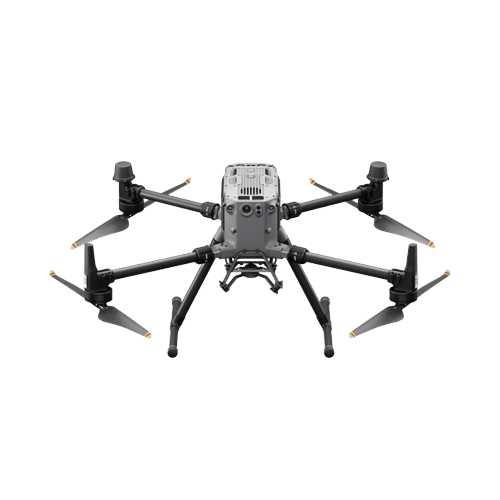
DJI Matrice 350 RTK
- Camera: Compatible with Zenmuse H20T.
- Sensor: Uncooled VOx microbolometer.
- Max Video Resolution: 640×512 thermal.
- Flight Time: 55 minutes.
- Transmission Distance: 15 km.
- Best Use: High-precision inspections, thermal missions.
Description:
The DJI Matrice 350 RTK is built for high-precision thermal inspections, equipped with the Zenmuse H20T thermal camera. This drone with thermal imaging camera is ideal for industrial missions requiring detailed thermal data and long flight endurance.
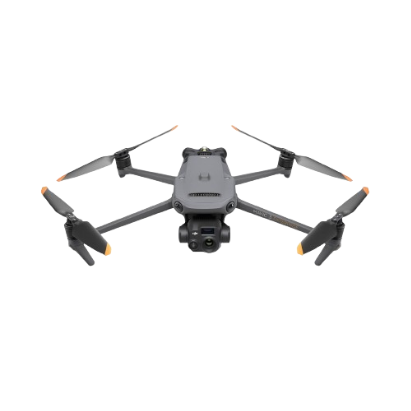
DJI Mavic 3 Enterprise
- Camera: Integrated thermal and RGB imaging.
- Sensor: 1/2″ CMOS.
- Max Video Resolution: 4K.
- Flight Time: 45 minutes.
- Transmission Distance: 15 km.
- Best Use: Enterprise-level inspections, search-and-rescue.
Description:
The DJI Mavic 3 Enterprise is a versatile infrared thermal camera drone designed for enterprise-level operations. Its integrated thermal camera provides real-time heat detection, making it perfect for search-and-rescue missions and industrial inspections.
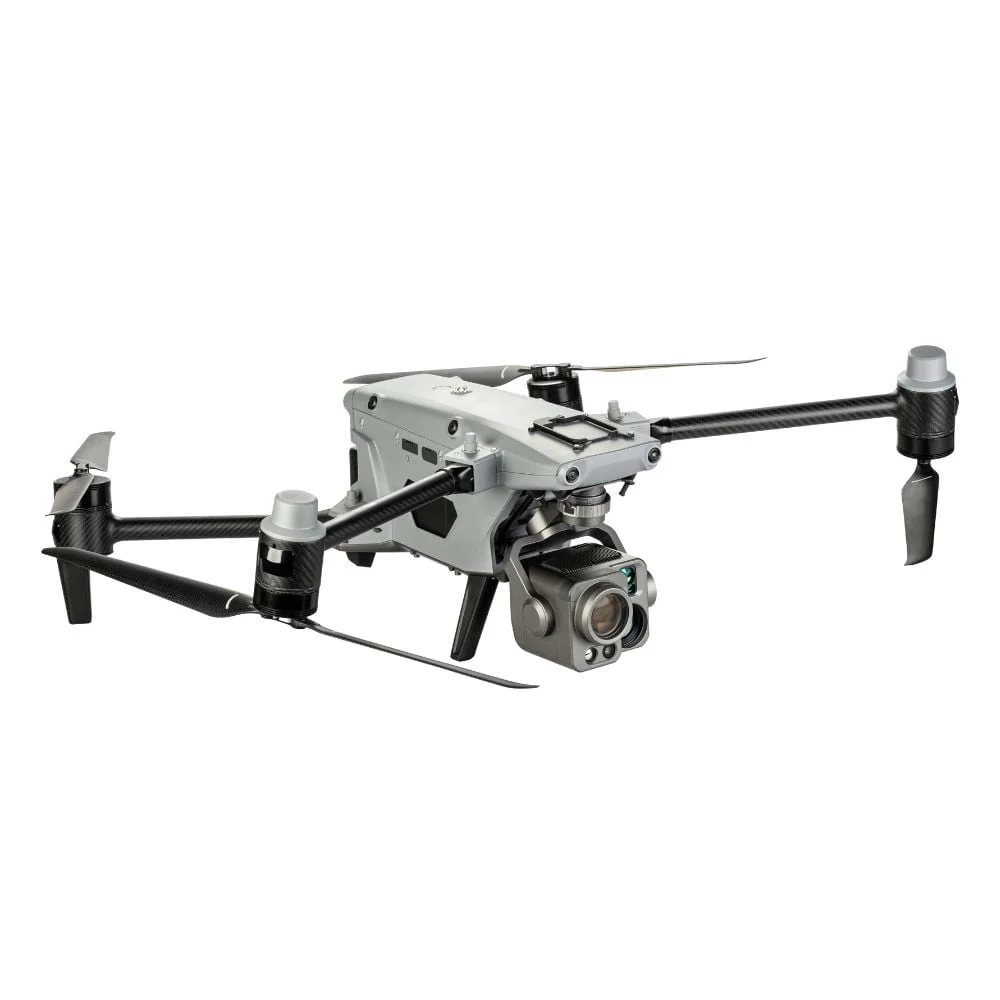
Autel ALPHA
- Camera: 640×512 thermal camera, 56x zoom.
- Sensor: Thermal and optical zoom.
- Max Video Resolution: 4K.
- Flight Time: 50 minutes.
- Transmission Distance: 15 km.
- Best Use: Public safety, long-range surveillance.
Description:
The Autel ALPHA is a high-performance thermal camera drone with 640×512 thermal resolution and 56x zoom, making it ideal for public safety and long-range surveillance. Its thermal capabilities allow precise monitoring in challenging environments.

AUTEL EVO II Dual 640T V3
- Camera: 640×512 thermal camera.
- Sensor: Uncooled VOx microbolometer.
- Max Video Resolution: 8K for RGB, 640×512 for thermal.
- Flight Time: 40 minutes.
- Transmission Distance: 9 km.
- Best Use: Industrial inspections, search-and-rescue.
Description:
The AUTEL EVO II Dual 640T V3 features a dual thermal and RGB camera setup, offering high-definition thermal and 8K RGB imaging. This drone with infrared thermal camera is perfect for industrial inspections and search-and-rescue missions, ensuring precise data collection.
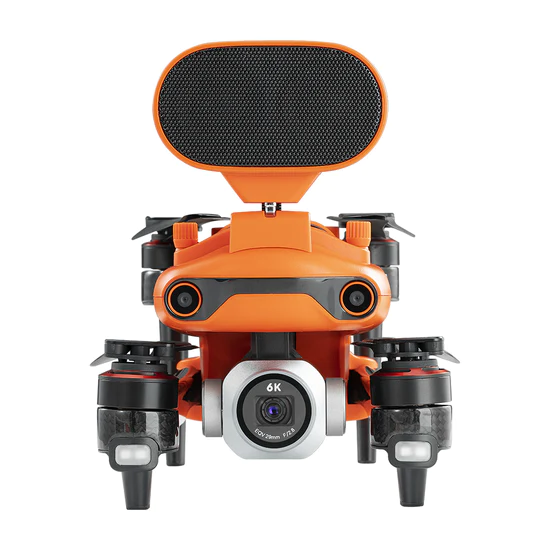
AUTEL EVO II Enterprise V3
- Camera: 640×512 thermal imaging.
- Sensor: Uncooled VOx microbolometer, 1/2″ CMOS for RGB.
- Max Video Resolution: 8K.
- Flight Time: 42 minutes.
- Transmission Distance: 13 km.
- Best Use: Thermal inspections, enterprise operations.
Description:
The AUTEL EVO II Enterprise V3 is an advanced thermal camera drone with high-resolution thermal imaging and 8K RGB capabilities, making it ideal for thermal inspections and enterprise-level operations.
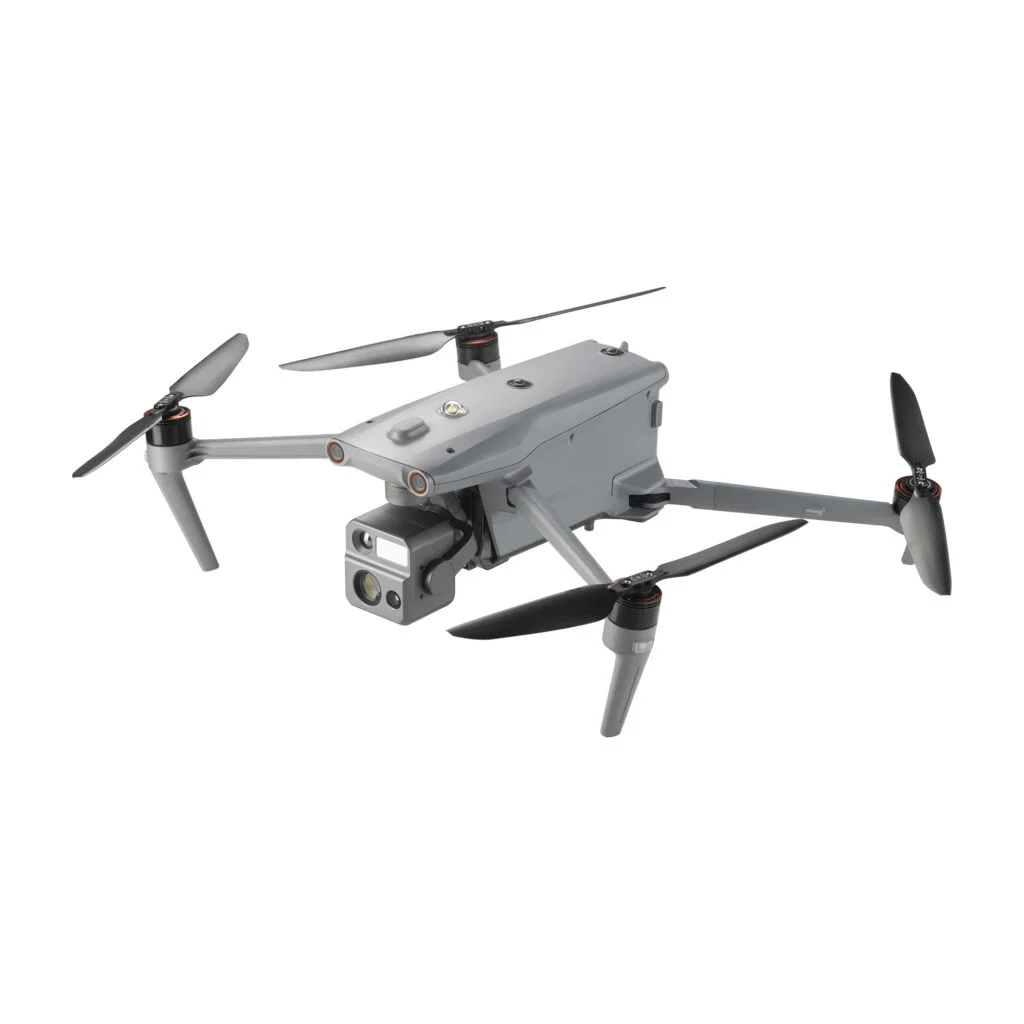
AUTEL EVO MAX 4N
- Camera: 640×512 thermal camera.
- Sensor: Night vision, thermal, and low-light cameras.
- Max Video Resolution: 4K.
- Flight Time: 42 minutes.
- Transmission Distance: 15 km.
- Best Use: Low-light and thermal operations.
Description:
The AUTEL EVO MAX 4N is equipped with night vision and a infrared thermal camera, perfect for low-light operations such as night surveillance and search-and-rescue. Its 640×512 thermal resolution provides detailed heat signatures in challenging conditions.
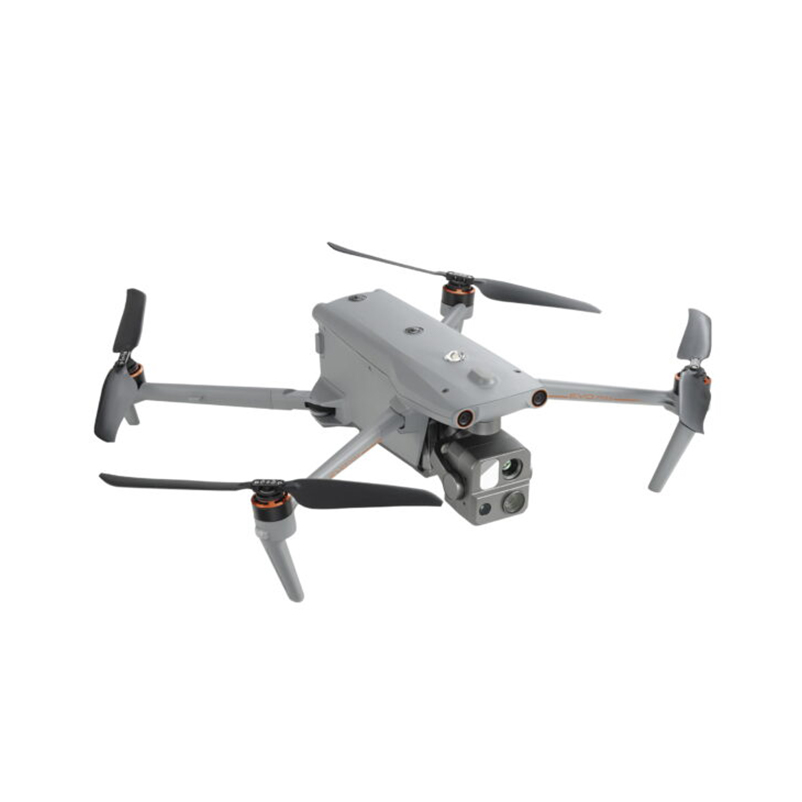
AUTEL EVO MAX 4T
- Camera: 640×512 thermal camera, 48 MP wide-angle.
- Sensor: Thermal and RGB sensors.
- Max Video Resolution: 4K.
- Flight Time: 40 minutes.
- Transmission Distance: 12 km.
- Best Use: Industrial thermal imaging, search-and-rescue.
Description:
The AUTEL EVO MAX 4T combines a 640×512 thermal camera with a 48 MP wide-angle camera for comprehensive thermal imaging and search-and-rescue operations. It’s a powerful tool for industries needing precise thermal data.
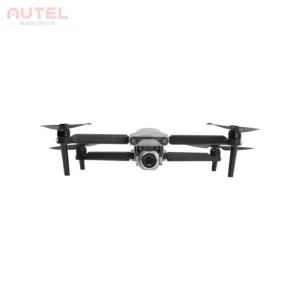
Autel EVO Lite Enterprise Series
- Camera: 640×512 thermal camera, 50 MP wide-angle, 1-inch CMOS sensor.
- Sensor: Thermal and RGB sensors, ISO support up to 48,000.
- Max Video Resolution: 6K.
- Flight Time: 45 minutes.
- Transmission Distance: 12 km.
- Thermal Zoom: 16x zoom.
- Thermal Accuracy: ±3°C.
- Best Use: Thermal inspections, search-and-rescue, industrial operations.
Description:
The Autel EVO Lite Enterprise Series features a powerful 640×512 thermal camera and a 1-inch CMOS sensor for high-resolution 6K video. With 16x thermal zoom and an impressive thermal accuracy of ±3°C, this drone is ideal for precision thermal inspections and search-and-rescue missions. The 12 km transmission distance and 45-minute flight time make it perfect for large-scale industrial operations and long-duration flights, providing detailed thermal data for critical tasks.
Best Thermal Camera for Drone
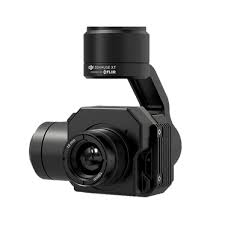
DJI Zenmuse XT Series Thermal Camera
- Resolution: 336×256 (9Hz) or 640×512 (9Hz).
- Best Use: Entry-level to high-resolution industrial inspections.
Description:
The DJI Zenmuse XT Series offers both entry-level and high-resolution infrared thermal camera options, perfect for a wide range of industrial inspections and surveillance applications.
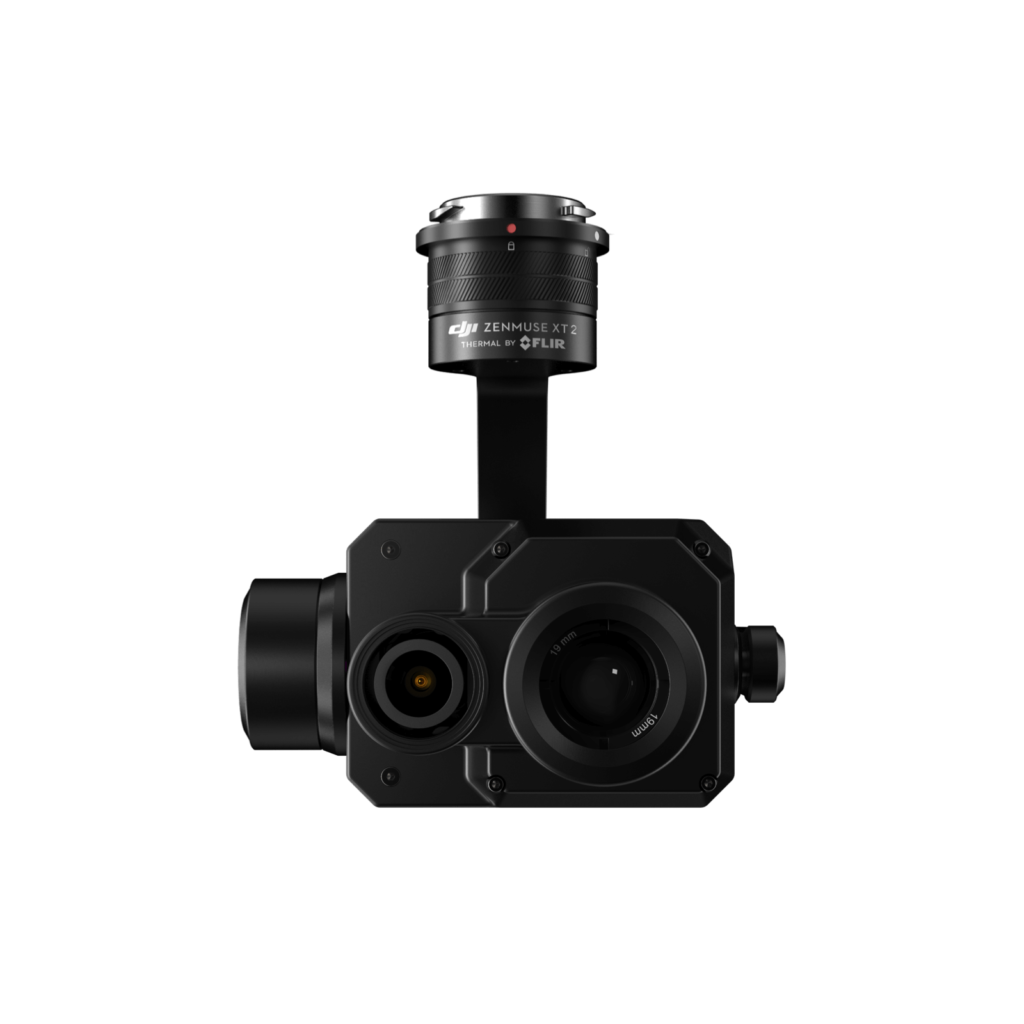
DJI Zenmuse XT2
- Resolution: 336×256 or 640×512.
- Frame Rates: 9Hz or 30Hz.
- Best Use: High-performance thermal imaging with gimbal stabilization.
Description:
The DJI Zenmuse XT2 is a stabilized infrared thermal camera that provides smooth, high-quality thermal data, making it ideal for precise thermal inspections and aerial surveillance.
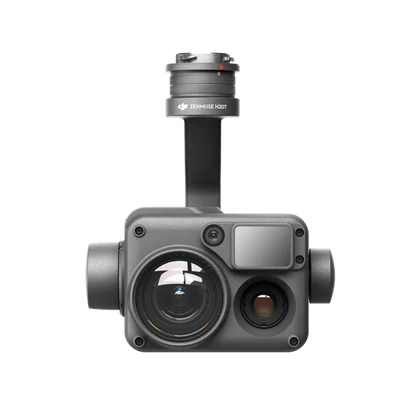
DJI Zenmuse H20T
- Resolution: 640×512 thermal, 30Hz.
- Best Use: Multi-sensor inspections, firefighting, surveillance.
Description:
The DJI Zenmuse H20T is a multi-sensor thermal camera payload, offering 640×512 thermal resolution, ideal for firefighting, search-and-rescue, and industrial inspections.
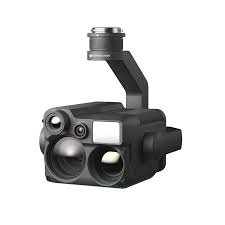
DJI Zenmuse H20N
- Resolution: 640×512 with wide and zoom capabilities.
- Best Use: Low-light and night operations.
Description:
The DJI Zenmuse H20N is designed for night operations, offering wide and zoom thermal imaging capabilities that ensure accurate data collection in low-light conditions.
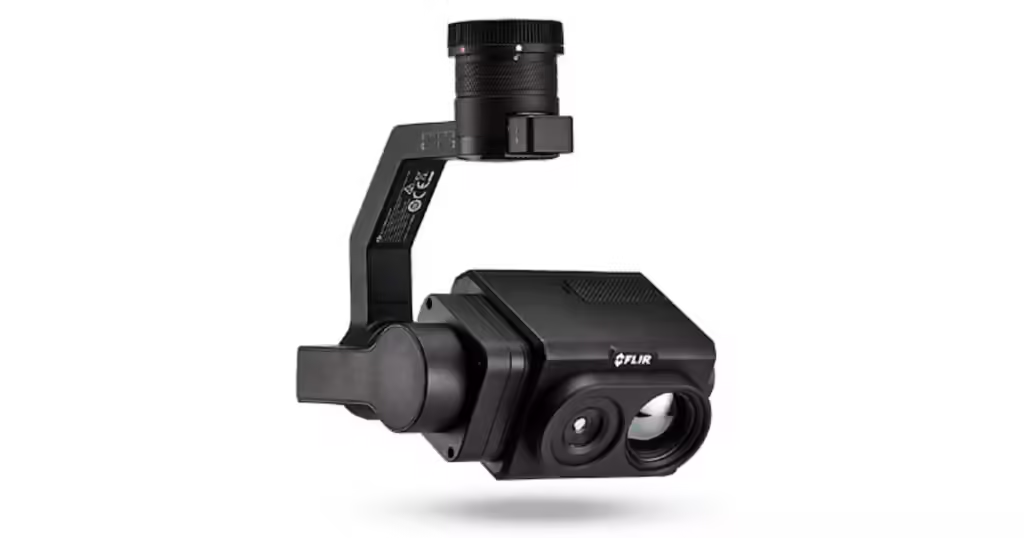
FLIR Vue TZ20 Dual Thermal Camera
- Resolution: Dual thermal sensors.
- Best Use: Captures thermal data from multiple perspectives, ideal for industrial applications.
Description:
The FLIR Vue TZ20 Dual infrared Thermal Camera is equipped with dual thermal sensors, providing comprehensive thermal data for industries needing detailed heat detection.
Best Infrared Thermal Camera Drone – Top Thermal Imaging Drone
Thermal imaging drones have become a game-changer in industries that rely on precise heat detection and analysis. A thermal camera drone allows users to detect heat signatures from above, providing vital data in various fields such as agriculture, firefighting, and search and rescue. The introduction of IR camera UAV systems has transformed how heat mapping and thermal inspections are performed, offering efficient and cost-effective alternatives to older methods.
Over time, thermal imaging camera drones have replaced traditional methods like manned aircraft for heat detection. These drones can capture accurate temperature data, identify hot spots, and survey large areas quickly.
What is a Infrared Thermal Camera on a Drone?
A thermal camera on a drone is a specialized sensor that detects heat rather than visible light. These cameras capture the infrared radiation emitted by objects, allowing users to “see” heat signatures. This is particularly useful in scenarios where visible light isn’t enough to detect temperature differences, such as in low light or through smoke.
How Thermal Imaging Works:
Thermal imaging camera work by detecting infrared radiation, which is emitted as heat by all objects. The warmer an object, the more infrared radiation it produces. IR camera UAV systems detect this radiation and convert it into electrical signals, which are then processed to create a visual image of the heat distribution. This heat map helps identify temperature variations across surfaces, making it easier to spot issues like electrical faults or structural weaknesses.
Difference Between Optical and Thermal Cameras:
While traditional optical cameras capture visible light to produce images, thermal imaging camera drones focus on detecting heat signatures. An optical camera shows what is visible to the naked eye, but a drone thermal imaging camera reveals heat variations, making it invaluable for detecting things hidden from view, such as people in the dark or structural problems in buildings. This unique feature is what makes drones with heat cameras so powerful in industries that need precise thermal data for safety and inspections.
How Do Thermal Imaging Cameras on Drone Work?
Thermal imaging cameras on drones, also known as drone thermal imaging cameras, work by detecting heat energy emitted from objects and transforming it into visible images. Unlike regular cameras, which rely on visible light, thermal camera on drone technology uses infrared radiation to capture heat signatures. This allows drones to detect temperature differences, making them useful in various applications such as search and rescue, firefighting, and industrial inspections.
1. Capturing Heat Signatures
Drones with heat cameras work by capturing the infrared radiation, or heat energy, emitted from objects. All objects, regardless of temperature, emit some form of infrared radiation. A thermal camera on drone is equipped with sensors that pick up these emissions, allowing the drone to “see” heat. These heat signatures are then displayed as thermal images, where warmer objects appear brighter and cooler ones appear darker. This capability makes thermal imaging camera drones ideal for spotting temperature differences that are invisible to the naked eye.
2. Thermal Imaging Sensors
The key technology behind thermal imaging drones is the thermal sensor, commonly referred to as a microbolometer. These sensors do not require cooling and can capture heat at various wavelengths. Microbolometers detect infrared radiation and convert it into an electrical signal, which is then processed into a thermal image. Drones equipped with these sensors can capture detailed thermal images, enabling users to monitor temperature changes in real time. The higher the sensor resolution, the more detailed the thermal image, which is why thermal imaging camera drones with advanced microbolometers are popular for industrial applications like electrical inspections and solar panel monitoring.
3. Infrared Camera UAV Systems
An IR camera UAV system consists of infrared cameras mounted on drones. These drone thermal imaging camera systems work by capturing infrared data, which is invisible to the human eye, and converting it into visual images that represent temperature variations. The infrared radiation is measured, and based on these readings, the system creates images that help identify temperature differences. Drone with heat camera systems can detect heat signatures even in complete darkness or through smoke, making them essential tools for search and rescue missions and firefighting operations.
4. Heat Maps and Temperature Readings
Once the thermal camera on drone captures infrared data, it creates heat maps, also known as thermograms. These maps use different colors to represent various temperature ranges. For example, warmer areas may be shown in red or yellow, while cooler regions may appear blue or green. Thermal imaging camera drones can also provide precise temperature readings of objects, which is crucial for applications like identifying hotspots in electrical systems or monitoring machinery for overheating. The temperature data can be analyzed to make informed decisions, such as repairing faulty equipment or directing firefighters to the hottest parts of a building.
5. Real-Time Data Processing
One of the key advantages of thermal imaging drones is their ability to process thermal data in real-time. Drones equipped with thermal imaging cameras can transmit data to a ground control station immediately, allowing users to monitor heat signatures on the spot. This real-time processing is crucial in time-sensitive operations, such as firefighting or search and rescue, where quick decisions are necessary. Drone thermal imaging cameras with real-time capabilities are also helpful in industrial inspections, as they allow operators to detect issues without delay.
6. Image Enhancement and Software Integration
Advanced thermal imaging camera drones are integrated with software that enhances the captured images. These systems may use AI and machine learning to analyze heat signatures more effectively, making it easier to identify patterns or anomalies. The data captured by IR camera UAV systems can be further processed using specialized software to improve clarity, zoom in on specific areas, and even generate detailed reports. This makes drones with thermal cameras an indispensable tool for industries like agriculture, construction, and public safety.
By combining advanced sensors, real-time data processing, and image enhancement software, thermal imaging camera drones provide an accurate and efficient way to capture and analyze heat signatures across a variety of environments. Whether for industrial use or emergency response, drones with heat cameras are revolutionizing how we monitor and interpret temperature data from the air.
Qualities of Thermal Cameras Drone
1. Fixed Mount vs. Attachable Payloads
When choosing a thermal camera on drone, it’s essential to decide between fixed-mount and attachable payloads. Fixed mounts are built into the drone and offer a permanent solution for thermal imaging. These are great for drones that only need a thermal imaging camera for specific tasks, such as detecting heat in wildfires or checking for insulation leaks. On the other hand, attachable payloads, like the Zenmuse H20T, allow flexibility, letting users swap the thermal camera with other sensors. This makes them perfect for those who need different imaging options, such as switching between thermal and standard optical cameras. The ability to change sensors ensures that the drone thermal imaging camera can handle various tasks across multiple industries.
2. Dual Sensors for Enhanced Imaging
Many modern drones come equipped with dual sensors, combining both traditional optical cameras and IR camera UAV systems. Dual-sensor setups, like the Zenmuse XT2, offer the best of both worlds by allowing users to capture high-resolution optical images alongside thermal readings. This means that you can seamlessly switch between a drone with heat camera and a standard camera, making the drone versatile for both visual inspections and thermal mapping. Dual sensors are beneficial for industries like firefighting, where it’s necessary to identify hotspots while still having a clear visual of the area.
3. Thermal Camera Resolution
The resolution of a thermal imaging camera plays a crucial role in the quality of data collected. Higher resolutions, like 640×512, offer more detailed images, making it easier to detect heat differences over large areas. This is especially important for tasks like roof inspections or monitoring electrical infrastructure, where small temperature changes can indicate significant problems. With high-resolution thermal imaging camera drones, users get clearer, more accurate heat maps, which are essential for precise inspections and safety assessments.
4. Radiometric Functionality
Radiometric thermal imaging cameras have the ability to capture precise temperature readings, not just visual heat maps. This makes radiometric cameras ideal for industries where specific temperature data is crucial, such as energy audits, firefighting, and industrial inspections. Radiometric cameras can pinpoint exact temperature differences, which helps professionals make informed decisions in real-time. For example, in firefighting, a drone with heat camera equipped with radiometric capabilities can detect fire hotspots and measure the temperature of hazardous materials, ensuring safety and effective response.
5. Gimbal and Stability
Gimbals are essential in thermal imaging camera drones to keep the camera stable while the drone is in motion. Without a good gimbal, the footage would be shaky, making it hard to get accurate thermal readings. A stable camera ensures that the thermal camera on drone collects consistent, reliable data, even when the drone is flying in windy conditions or at high altitudes. Gimbals also help capture smooth, clear images, making them vital for applications like utility inspections and search-and-rescue missions.
6. Focal Length and Field of View
The focal length of the thermal camera on drone determines how much of the area the camera captures. A shorter focal length, like 13mm, gives a wide-angle view, making it ideal for scanning large areas quickly. On the other hand, a longer focal length, such as 19mm, offers more magnification, perfect for focusing on smaller, detailed areas. The right focal length depends on the job, whether you’re inspecting vast farmlands or zeroing in on specific infrastructure issues. A drone thermal imaging camera with the correct focal length ensures you can capture the exact data you need.
Key Features to Look for in a Thermal Imaging Camera Drone
Thermal Resolution
One of the most important features of a thermal camera on drone is its resolution. High-resolution thermal cameras, such as 640×512, provide clear and detailed images that are crucial for industries like firefighting, building inspections, and environmental monitoring. A higher resolution means more pixels on the screen, allowing for more accurate detection of heat sources and temperature differences. When it comes to thermal imaging camera drones, higher resolution ensures you don’t miss small yet critical details in the data, making your inspections more effective.
Dual Camera Setup
Many drones now feature dual cameras that combine optical and thermal imaging, like the Zenmuse XT2. This drone thermal imaging camera setup allows you to switch seamlessly between visible light and thermal imaging, providing more versatility during inspections. For instance, in search-and-rescue operations, rescuers can use the optical camera to navigate and the thermal camera to detect body heat. The dual-camera setup enhances the drone’s capabilities, allowing it to be used in a wider variety of situations, from agriculture to firefighting.
Radiometric Capabilities
A drone with heat camera that has radiometric capabilities is essential for precise temperature readings. Radiometric thermal cameras don’t just show hot and cold spots; they provide specific temperature measurements for each pixel in the image. This is crucial in industries like energy and firefighting, where exact temperature readings are needed to make critical decisions. For example, thermal imaging camera drones equipped with radiometric sensors can detect overheating electrical components or pinpoint the temperature of a fire, helping to direct firefighting efforts more efficiently.
Long-Range Transmission
For large-scale industrial inspections, having a thermal imaging camera drone with long-range transmission is key. Drones that can transmit thermal data over long distances in real-time allow operators to stay at a safe distance while still gathering critical information. This feature is especially important for inspecting powerlines, pipelines, or large agricultural fields. The ability to monitor heat signatures from afar ensures that the drone thermal imaging camera can provide continuous data even in difficult-to-reach or hazardous environments.
By understanding these key qualities and features, users can choose the best thermal camera on drone for their specific needs, whether it’s for firefighting, agriculture, or industrial inspections.
Why Choose a Thermal Camera Drone?
DJI & Autel thermal camera drone are equipped with sensors that detect infrared radiation. These sensors capture temperature variations, allowing users to identify heat signatures in real time. Objects emit infrared radiation based on their temperature, and warmer objects emit more. A thermal drone uses this radiation to create a heat map of the area it’s flying over, giving operators a clear picture of temperature differences that are crucial in many applications.
- Enhanced Vision: These drones can operate in low-light conditions and through obstacles like smoke, fog, and dust, making them ideal for nighttime operations and difficult environments.
- Improved Safety: Thermal drones reduce the need for manual inspections in hazardous areas by providing detailed thermal images remotely.
- Real-time Data Collection: Drones provide live thermal imaging, which enables quick decision-making and immediate responses during critical operations.
- Integration with Mapping & GIS: The data collected by thermal drones can be integrated with GIS and mapping technologies, allowing for accurate geospatial analysis.
- Flexibility: Thermal drones are highly portable and easy to deploy, making them efficient for various industries.
Features of thermal camera drone from XRTech Group:
- Infrared Resolution: High thermal resolution, like 640×512 pixels, captures fine temperature differences for precise thermal mapping.
- Frame Rate: Drones offer 25Hz to 30Hz frame rates for smooth thermal imaging, essential for real-time operations like search-and-rescue.
- Dual Camera Systems: Combine thermal and RGB cameras to capture both visual and thermal data, making it versatile for various applications.
- Zoom Capabilities: Many thermal drones come with optical zoom (up to 10x), enabling detailed inspection without the need for close proximity.
- Obstacle Avoidance: Equipped with omnidirectional sensors, drones navigate complex environments safely, avoiding obstacles during flights.
- Flight Time: High-end drones can fly for up to 55 minutes, allowing longer missions without frequent battery changes.
- Weather Resistance: Drones like the DJI Matrice 350 RTK are rated IP55, allowing them to operate in harsh weather conditions like rain and dust.
- Range: Thermal drones can cover vast distances, with transmission ranges up to 15 km, making them suitable for large-area inspections.
- Real-time Data Transmission: Drones send live thermal data to ground operators, allowing immediate analysis and decision-making in time-sensitive situations.
- Temperature Range Detection: Thermal cameras can detect a wide range of temperatures, from extreme cold to heat, making them useful in various applications like firefighting.
- Compact and Portable: Some drones, such as the DJI Mavic 3 Thermal, are lightweight and portable, ensuring easy transport and rapid deployment.
- Payload Flexibility: Many drones support interchangeable payloads, allowing operators to switch between thermal and other sensor types for versatile operations.
- Precision Mapping: Drones integrate with GIS and mapping software for georeferenced thermal images, essential for urban planning or environmental monitoring.
- Night Vision Capabilities: Thermal drones can capture imagery even in complete darkness, which is crucial for law enforcement and emergency services.
- Safety Features: Equipped with fail-safe mechanisms like return-to-home and dual GPS, thermal drones ensure safe operations in critical environments.
These features make thermal camera drones an essential tool for industries like search-and-rescue, industrial inspections, agriculture, and firefighting.
Industrial applications of thermal camera drone
- Building Inspections:
- Thermal camera drones are used to detect heat loss and identify insulation deficiencies in buildings. By capturing thermal images, inspectors can spot areas where heat escapes, enabling targeted repairs to improve energy efficiency and reduce utility costs.
- Electrical Inspections:
- In industrial settings, thermal imaging drones help monitor electrical systems. They detect hot spots and overheating components in electrical panels, transformers, and wiring, preventing potential failures and minimizing the risk of fires.
- Solar Panel Inspections:
- Thermal camera drones are employed to assess the condition of solar panels. They identify faulty cells and areas with reduced efficiency, ensuring that solar arrays operate optimally and maintaining energy production.
- Wind Turbine Monitoring:
- Thermal drones inspect wind turbines to detect issues like gearbox and brake failures. By analyzing thermal signatures, maintenance teams can address problems before they lead to costly downtime and repairs.
- Pipeline Inspections:
- Thermal imaging drones are used to find leaks and monitor the integrity of pipelines. They can detect temperature changes caused by leaking fluids, helping to quickly address and repair pipeline issues.
- Industrial Equipment Monitoring:
- Thermal camera drones monitor machinery and equipment for signs of overheating or wear. This proactive approach helps in scheduling maintenance, preventing breakdowns, and extending the lifespan of costly equipment.
- Roof Inspections:
- Thermal drones assess roof conditions, identifying areas with poor insulation, water damage, or heat retention issues. This application is crucial for maintaining building integrity and preventing structural damage.
- Firefighting:
- Thermal camera drones are used in firefighting to see through smoke and locate hot spots. They provide critical information about fire behavior and help firefighters plan their strategies effectively.
- Agriculture:
- In agriculture, thermal drones monitor crop health and irrigation needs. They detect variations in plant temperature, helping farmers identify stressed areas and optimize water usage.
- Search and Rescue Operations:
- Thermal imaging drones are invaluable in search and rescue missions. They can locate lost individuals or survivors in challenging conditions, such as dense forests or disaster-struck areas, by detecting their heat signatures.
- Structural Inspections:
- Thermal camera drones inspect the integrity of structures like bridges and dams. They identify potential issues such as water ingress or material degradation, ensuring timely maintenance and safety.
- Environmental Monitoring:
- Thermal drones monitor environmental conditions, such as detecting temperature changes in bodies of water or assessing wildlife health. This data aids in conservation efforts and environmental protection.
- Construction Site Surveillance:
- Thermal camera drones are used on construction sites to monitor progress and detect issues like heat loss in buildings. They help ensure that construction work meets quality standards and adheres to specifications.
- HVAC System Inspections:
- Thermal drones evaluate the performance of HVAC systems, detecting inefficiencies and potential failures. This helps in maintaining optimal climate control and reducing energy consumption.
- Manufacturing Processes:
- Thermal camera drones inspect manufacturing processes, identifying anomalies such as uneven heating or cooling. They assist in ensuring product quality and process efficiency in industrial production.
Factors to Consider When Choosing a Thermal Imaging Camera Drone
When selecting the best thermal camera on a drone, it’s important to weigh key factors to ensure you’re getting the most out of your investment. Here are a few things to consider:
1. Flight Time
The flight time of a drone with a thermal imaging camera is critical, especially for large-scale mapping and extended inspections. Drones with longer flight times allow for longer surveys without needing frequent battery changes, making them ideal for industrial use. A drone with heat camera that offers at least 30 minutes of flight time will help you cover larger areas efficiently.
2. Transmission Frequency
The transmission frequency of a drone’s thermal imaging camera affects the smoothness of the video feed. For real-time data, a transmission frequency of 30Hz offers smoother, more accurate images compared to 9Hz, which may result in choppier video. When choosing a thermal camera on a drone, opt for a model with a higher transmission frequency for better real-time analysis, particularly in critical situations like search and rescue or firefighting.
3. Battery Life
For uninterrupted missions, battery life plays a significant role. Drones equipped with thermal imaging cameras that support swappable batteries ensure extended operational times. This feature is especially useful for drone thermal imaging camera systems used in long inspections, reducing downtime and improving efficiency. A good rule of thumb is to select a drone that allows for at least one or two battery swaps mid-mission.
4. Thermal and Optical Integration
Drones that offer both thermal and optical integration provide better flexibility for various tasks. A drone with a thermal imaging camera and an optical sensor lets you switch between visual and infrared views seamlessly, offering more comprehensive data in real-time. This combination is particularly useful for industries like construction, agriculture, and law enforcement, where thermal and optical data complement each other.
Future of Thermal Camera Drone
The future of thermal drones is bright, with several emerging technologies and new use cases on the horizon.
1. Emerging Technologies in Thermal Imaging
New technologies, like AI and real-time data analytics, are set to transform the way thermal camera drones operate. AI integration allows drone thermal imaging cameras to automatically detect objects, analyze temperature patterns, and provide actionable insights in real-time. This makes inspections, search and rescue missions, and other tasks much more efficient.
2. Expanding Use Cases
As technology improves, the use cases for thermal imaging camera drones will continue to expand into areas such as healthcare, environmental monitoring, and urban planning. IR camera UAV systems can be used for patient monitoring, while thermal imaging drones can track climate changes and monitor city infrastructure. The growing adoption of drones with heat cameras in these fields highlights their versatility.
3. Improved Thermal Resolution
In the future, thermal imaging camera drones will likely offer higher resolution, allowing for more detailed data collection. Improved resolution will provide sharper thermal images, making it easier to identify small heat variations across different surfaces. This will be particularly beneficial in industries like firefighting, power line inspections, and environmental conservation, where accurate temperature readings are crucial.
Explore the Latest in Thermal Drone Technology with XRTech Group
Whether you need a drone for building inspections, firefighting, or wildlife management, XRTech Group offers top-tier solutions with advanced thermal imaging technology. Our drones are engineered for versatility, durability, and exceptional performance, ensuring you get the most value for your investment.
Visit Our 4k Drone Camera Collection
Get in touch with XRTech Group today to find the right thermal camera drone at best price for your business and take your operations to new heights!
FAQs for Drone with Thermal Camera
-
1. What is a drone with a thermal camera used for?
A drone with a thermal camera is primarily used for detecting heat signatures from an aerial perspective. It's widely used in industries like firefighting, search and rescue, agriculture, and building inspections to detect temperature differences and identify hot or cold spots in real-time.
-
2. How does a thermal camera on a drone work?
Thermal cameras on drones detect infrared radiation emitted by objects, turning heat into images. Warmer objects appear brighter, while cooler objects are darker. This allows drones to capture thermal images or videos that help users identify temperature variations over large areas.
-
3. What industries benefit most from using thermal imaging drones?
Industries like firefighting, agriculture, construction, law enforcement, and utilities benefit the most from thermal imaging drones. These drones provide real-time temperature data that aids in fire detection, crop monitoring, equipment inspections, and locating missing persons in search and rescue operations.
-
4. Can thermal drones be used at night?
Yes, thermal drones are highly effective for night operations. Since they detect heat rather than relying on visible light, they can identify heat signatures even in complete darkness, making them ideal for nighttime surveillance, search and rescue, and wildlife monitoring.
-
5. What is the best thermal camera for drones?
Some of the best thermal cameras for drones include the DJI Zenmuse H20T, DJI Zenmuse XT2, and FLIR Vue Pro. These cameras offer high-resolution thermal imaging and are compatible with popular drones like the DJI Matrice 300 RTK and DJI Mavic 2 Enterprise Dual.
-
6. How accurate are thermal imaging drones?
The accuracy of thermal imaging drones depends on the camera's resolution and radiometric capability. Most high-quality thermal cameras can detect temperature differences as small as 0.1°C, making them precise for various applications such as inspections and firefighting.
-
7. What factors affect the performance of a drone thermal camera?
Key factors affecting a thermal camera’s performance include resolution, focal length, sensor quality, and environmental conditions. A higher resolution and better sensor will provide clearer images, while extreme weather conditions like heavy rain or wind may affect data quality.
-
8. How much does a drone with a thermal camera cost?
The cost of a drone with a thermal camera varies depending on the model and camera. Entry-level thermal drones start around $2,000, while more advanced options with high-resolution cameras can cost upwards of $10,000 or more.
-
9. Can you use a thermal drone for solar panel inspections?
Yes, thermal drones are ideal for inspecting solar panels. They can detect defects like cracks, hot spots, and faulty interconnectors, which are not visible to the naked eye. This helps identify areas of inefficiency and maintain optimal energy output.
-
10. What is the flight time for drones equipped with thermal cameras?
Flight times for thermal drones vary based on the model and payload. Typically, drones like the DJI Matrice 300 RTK equipped with a thermal camera can fly for up to 45 minutes, while smaller drones like the Mavic 2 Enterprise Dual may have a flight time of 25 to 30 minutes.
